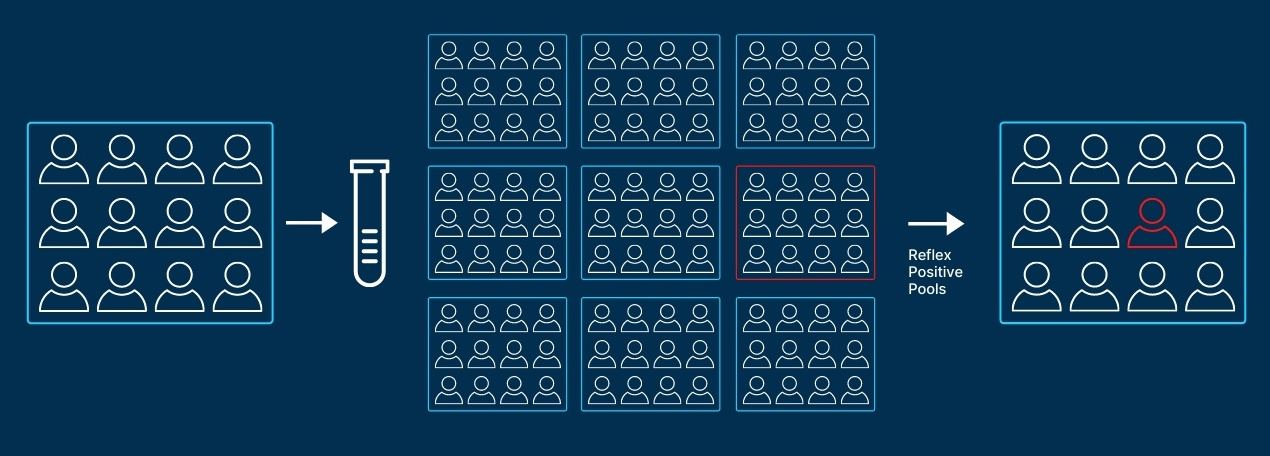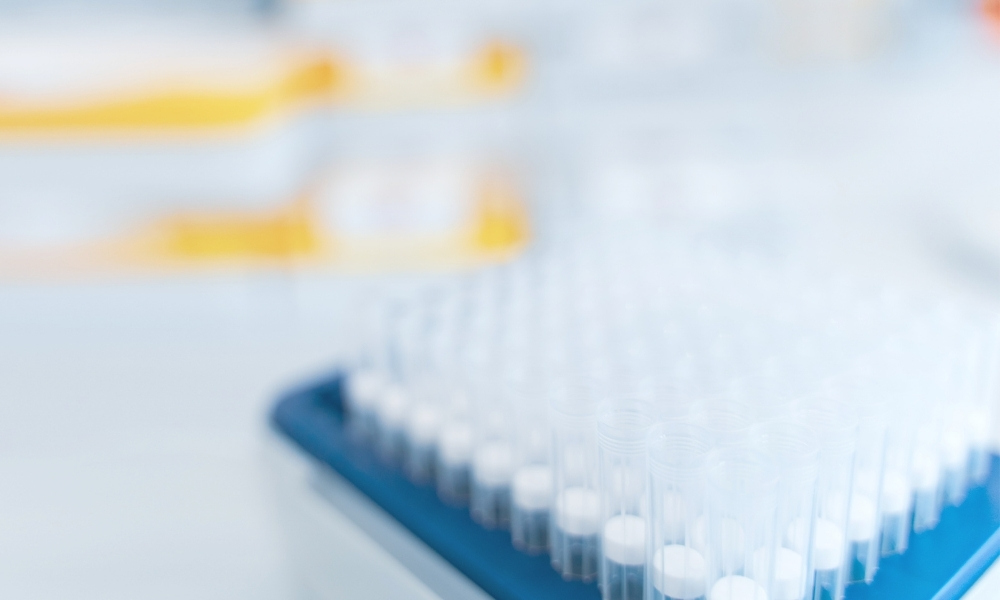The Value of Surveillance Testing
How does surveillance testing differ from other types of COVID-19 testing?
While individual diagnostic testing is primarily designed to track and verify COVID-19 positivity in those who have contracted the SARS-CoV-2 coronavirus, surveillance testing instead aims to monitor local infection rates and trends in a population. This method of testing pools samples to conserve supplies, and information is reserved to help inform local health authorities. Surveillance testing takes samples from a percentage of a certain population, regardless of whether or not the sampled persons were exposed to the virus or are symptomatic.
Surveillance testing for COVID-19 is an important public health tool that provides a way to monitor for community or population-level outbreaks. When performed effectively, this testing helps to determine the effects of mitigation measures such as mask-wearing, social distancing, and vaccinations.
To understand it better, visually, check out this short, 2-min explanatory video we’ve put together:
How does it work?
COVID-19 surveillance testing is performed by collecting specimens from multiple individuals and then batching those specimens together to create a “pool.” Therefore, testing the pool requires only one test on a group of samples, rather than testing each individual sample. If the test comes back negative, the whole group is negative and the organization can feel safe in resuming their activities. If the test comes back positive, the group is referred for individual diagnostic testing.
Laboratories can collect up to 25 asymptomatic samples and place them into one barcoded tube. This pool of samples is run as a single test, which allows a lab to increase its throughput by 25X, reducing costs and turnaround times. As a result, whether the test is positive or negative, this process allows physicians to make more informed decisions faster.

Practical applications
Surveillance tests in particular are helping universities and schools to make informed decisions about returning students and staff because they serve as an indicator of the overall health of the student and faculty population. For instance, the University of Georgia administered over 1,000 tests during the week of March 22 – 28, 2021, and found just nine positives. This marked the sixth straight week their positivity rate remained below one percent, according to UGA Today.
At the same time, institutions such as Duke University have utilized surveillance testing to assess the safety of opening buildings like residence and dining halls. When weekly surveillance testing of 2,412 individuals recently revealed a one-week jump in overall positivity rates of nearly .5 percentage points, Duke chose to close a dining hall until further notice.
How surveillance testing will inform our next steps
Just as Duke University and the University of Georgia are using surveillance testing to inform their decisions on opening or closing their campuses, other universities and businesses are using surveillance to monitor their populations’ health and determine the speed at which their students and employees can return to school and work. With multiple COVID-19 vaccines now widely available to the general public, people are beginning to think forward about the “return to normalcy.”
Surveillance testing is showing itself to be a reliable and practical tool that institutions are using to re-open or shut down as necessary. The usefulness and efficacy of surveillance testing can in turn inform health authorities, employers, and schools of how and when their communities can reopen at a safe pace.
Contact Lighthouse Lab Services to validate your laboratory for surveillance testing today. Give your community a way back to normal while making your lab more efficient.
References:
(2020, October 23). Interim Guidance for Use of Pooling Procedures in SARS-CoV-2 Diagnostic, Screening, and Surveillance Testing. Centers for Disease Control and Prevention.
Retrieved from: https://www.cdc.gov/coronavirus/2019-ncov/lab/pooling-procedures.html
(2020, December 10). COVID-19 Test Uses: FAQs on Testing for SARS-CoV-2. U.S. Food & Drug Administration.
Retrieved from: https://www.fda.gov/medical-devices/coronavirus-covid-19-and-medical-devices/covid-19-test-uses-faqs-testing-sars-cov-2
(2021, March 31). Reports of COVID-19 hold steady. UGA Today.
Retrieved from: https://news.uga.edu/covid-numbers-3-31/
Bey, N. and Zolotor, A. (2021, March 31). Positive COVID-19 tests decline for second week in a row. The Chronicle.
Retrieved from: https://www.dukechronicle.com/article/2021/03/duke-university-positive-covid-test-decline-second-week-student-vaccine
McCarty, M. (2021, March 24). FDA clarifies confusion surrounding screening vs. surveillance testing. BioWorld.
Retrieved from: https://www.bioworld.com/articles/505146-fda-clarifies-confusion-surrounding-screening-vs-surveillance-testing
